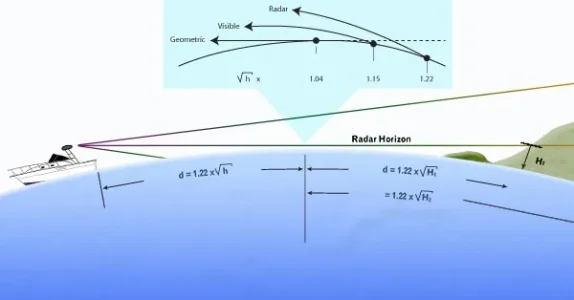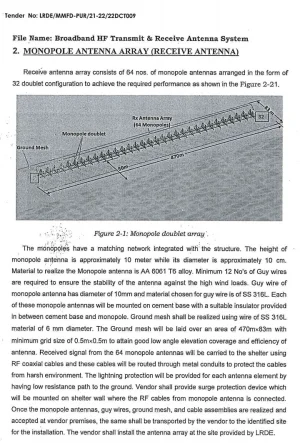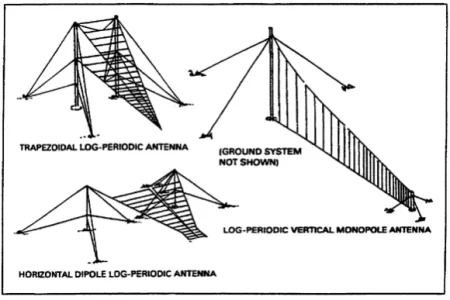- Joined
- Jul 15, 2024
- Messages
- 240
- Likes
- 1,251
In a big development, the premier radar development lab of DRDO is working on an “Over-the-Horizon” OTH radar system to keep a close eye on Chinese movement in Indian ocean region (IOR). The Indo-pacific is now turning out to be the most important part of the world today. For India, this part of the world is even more important as it is India’s Backyard and Indian Navy prouds itself as “Net Security Provider” in Indian ocean Region (IOR). The presence of Peoples liberation Army Navy in this region is increasing with every passing day and keeping close vigil in this area is paramount requirement for the Indian Navy.
To monitor movement in high seas the countries often rely on satellite pictures, maritime surveillance aircraft and drones, coastal surveillance radar units and ship borne radar systems.
However Aircraft-based surveillance, is impacted by the endurance of the aircraft and although drones offer longer endurance they too can't monitor an area 24×7 therefore airborne surveillance systems are not not a perfect fit in the requirement.
The Ground based radar systems are a comparatively better option when compared with airborne systems, especially given that endurance of such a system is endless, however this approach suffers a major roadblock "Radar Horizon"
The effect of the earth horizon on performance of the radar is called as “radar horizon”.
The radar horizon is defined by the distance at which the radar beam rises enough above the Earth’s surface to make detection of a target at low level impossible.

Coastal surveillance radars or the shipborne radars can only see a limited distance because of the Radar Horizon. The need however is to monitor a larger sea area.
The solution that can help India to monitor this large sea area, without the need of costly airborne sensors is “OTH – Over the Horizon Radar”.
Several OTH radar systems were deployed by both the US and USSR during the Cold War as part of their early warning radar systems, but these have generally been replaced by airborne early warning systems.
OTH radars have recently been making a comeback because of improved computing and lesser operational cost when compared with airborne assets.
There are 2 different types of OTH radars that use two different propagation techniques to see beyond the Horizon
The ionized part of the Earth’s atmosphere is known as the ionosphere. Ultraviolet light from the sun collides with atoms in this region knocking electrons loose. This creates ions, This is what gives the Ionosphere its name and it is these free electrons that cause the reflection and absorption of radio waves.

The radio signals transmitted at an angle into the sky will be refracted towards the ground by the ionosphere, allowing them to return to earth beyond the horizon. A small amount of this signal will be scattered off desired targets back towards the sky, refracted off the ionosphere again, and return to the receiving antenna by the same path.

LRDE (A DRDO Lab) is a working on a Skywave propagation based OTH Radar prototype. The system design is already complete and will now entering the prototype realization stage The Lab is working with industry partners to realise an over the horizon radar prototype in coming 6 months.


The prototype radar will have two different type of radar arrays. The wire log-periodic antenna array and broadband monopole array. It is believed the log-periodic antenna array will be used to identify the best frequency to use. The “best frequency to use” depends on the current conditions of the atmosphere and the sunspot cycle. For these reasons, systems using skywaves typically employ real-time monitoring of the reception of backscattered signals to continuously adjust the frequency of the transmitted signal.
In the LRDE system this will be achieved with the help of log-periodic antenna array and for the actual OTH operation broadband monopole array will be used.

The prototype will have log-periodic antenna with 50-meter height, 100-meter length and 150×50 Meter size of ground mesh. Whereas the broadband monopole arrays will be in “Monopole doublet” configuration. A “Monopole doublet” has two monopole antennae placed right next to each other. The configuration that LRDE is working has 16 of these monopole doublets making it an array of 32 elements

Given that similar systems across the globe are around 2.5 to 3 Kilometres in area and the LRDE prototype is only 1/4th their size, I assume the system developed for now will be used as proof of concept and a larger system will be developed after successful completion and extensive trial and evaluation of this project.
Update: According to new information DRDO is working on a full scale version of its previous Skywave OTH Radar and a prototype Surface Wave OTH Radar is under fabrication as well
To monitor movement in high seas the countries often rely on satellite pictures, maritime surveillance aircraft and drones, coastal surveillance radar units and ship borne radar systems.
However Aircraft-based surveillance, is impacted by the endurance of the aircraft and although drones offer longer endurance they too can't monitor an area 24×7 therefore airborne surveillance systems are not not a perfect fit in the requirement.
The Ground based radar systems are a comparatively better option when compared with airborne systems, especially given that endurance of such a system is endless, however this approach suffers a major roadblock "Radar Horizon"
The effect of the earth horizon on performance of the radar is called as “radar horizon”.
The radar horizon is defined by the distance at which the radar beam rises enough above the Earth’s surface to make detection of a target at low level impossible.

Coastal surveillance radars or the shipborne radars can only see a limited distance because of the Radar Horizon. The need however is to monitor a larger sea area.
The solution that can help India to monitor this large sea area, without the need of costly airborne sensors is “OTH – Over the Horizon Radar”.
What is Over the Horizon radar (OTH)
Over the Horizon radar (OTH) also called as beyond the horizon Radar (BTH), is a type of radar system with the capability to detect targets at very long ranges, typically hundreds to thousands of kilometres, even beyond the radar horizon, which is the distance limit for ordinary land-based Radars.Several OTH radar systems were deployed by both the US and USSR during the Cold War as part of their early warning radar systems, but these have generally been replaced by airborne early warning systems.
OTH radars have recently been making a comeback because of improved computing and lesser operational cost when compared with airborne assets.
There are 2 different types of OTH radars that use two different propagation techniques to see beyond the Horizon
Shortwave systems
This type of OTH refract their signals off the ionosphere for very long-range detection. This is also called as skywave or “skip” propagation, in which shortwave radio waves are refracted off the "ionosphere".The ionized part of the Earth’s atmosphere is known as the ionosphere. Ultraviolet light from the sun collides with atoms in this region knocking electrons loose. This creates ions, This is what gives the Ionosphere its name and it is these free electrons that cause the reflection and absorption of radio waves.

The radio signals transmitted at an angle into the sky will be refracted towards the ground by the ionosphere, allowing them to return to earth beyond the horizon. A small amount of this signal will be scattered off desired targets back towards the sky, refracted off the ionosphere again, and return to the receiving antenna by the same path.
Surface wave systems
Also called as “Ground wave” propagation type OTH. This type of the OTH system uses low frequency radio waves that, due to diffraction, follow the curvature of the Earth to reach beyond the horizon. These systems achieve detection ranges of the order of a hundred kilometres from small, conventional radar installations.
LRDE (A DRDO Lab) is a working on a Skywave propagation based OTH Radar prototype. The system design is already complete and will now entering the prototype realization stage The Lab is working with industry partners to realise an over the horizon radar prototype in coming 6 months.


The prototype radar will have two different type of radar arrays. The wire log-periodic antenna array and broadband monopole array. It is believed the log-periodic antenna array will be used to identify the best frequency to use. The “best frequency to use” depends on the current conditions of the atmosphere and the sunspot cycle. For these reasons, systems using skywaves typically employ real-time monitoring of the reception of backscattered signals to continuously adjust the frequency of the transmitted signal.
In the LRDE system this will be achieved with the help of log-periodic antenna array and for the actual OTH operation broadband monopole array will be used.

The prototype will have log-periodic antenna with 50-meter height, 100-meter length and 150×50 Meter size of ground mesh. Whereas the broadband monopole arrays will be in “Monopole doublet” configuration. A “Monopole doublet” has two monopole antennae placed right next to each other. The configuration that LRDE is working has 16 of these monopole doublets making it an array of 32 elements

Given that similar systems across the globe are around 2.5 to 3 Kilometres in area and the LRDE prototype is only 1/4th their size, I assume the system developed for now will be used as proof of concept and a larger system will be developed after successful completion and extensive trial and evaluation of this project.
Update: According to new information DRDO is working on a full scale version of its previous Skywave OTH Radar and a prototype Surface Wave OTH Radar is under fabrication as well


